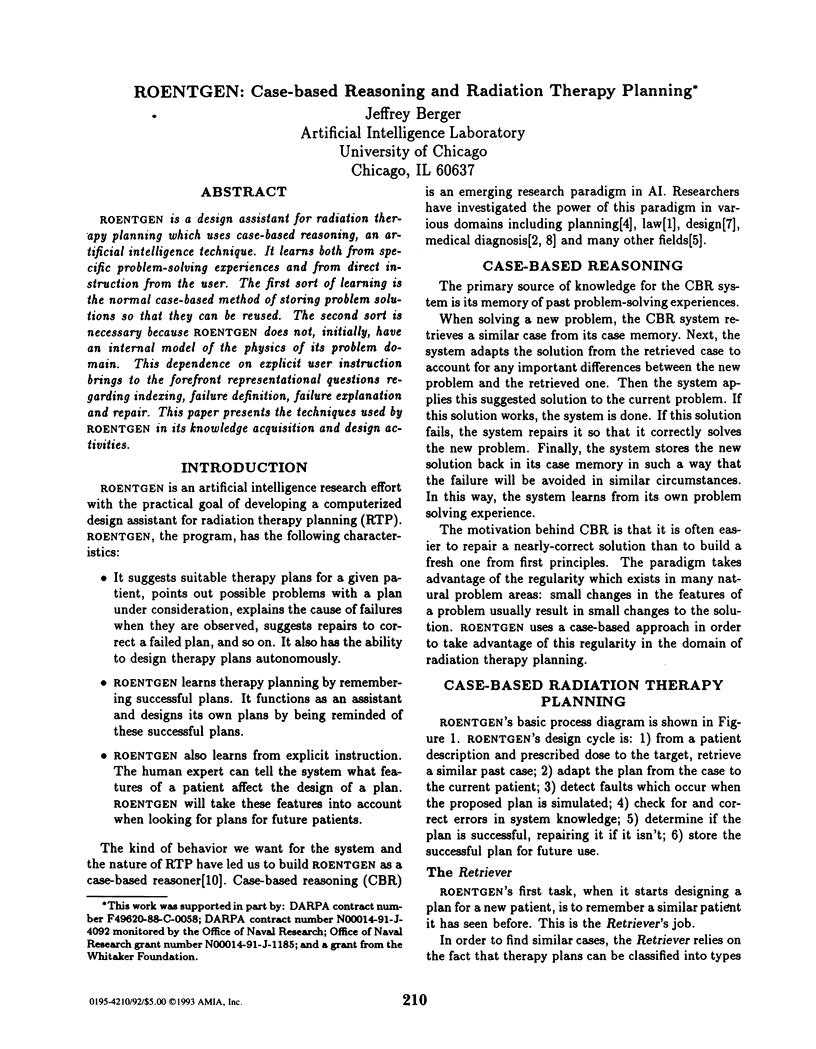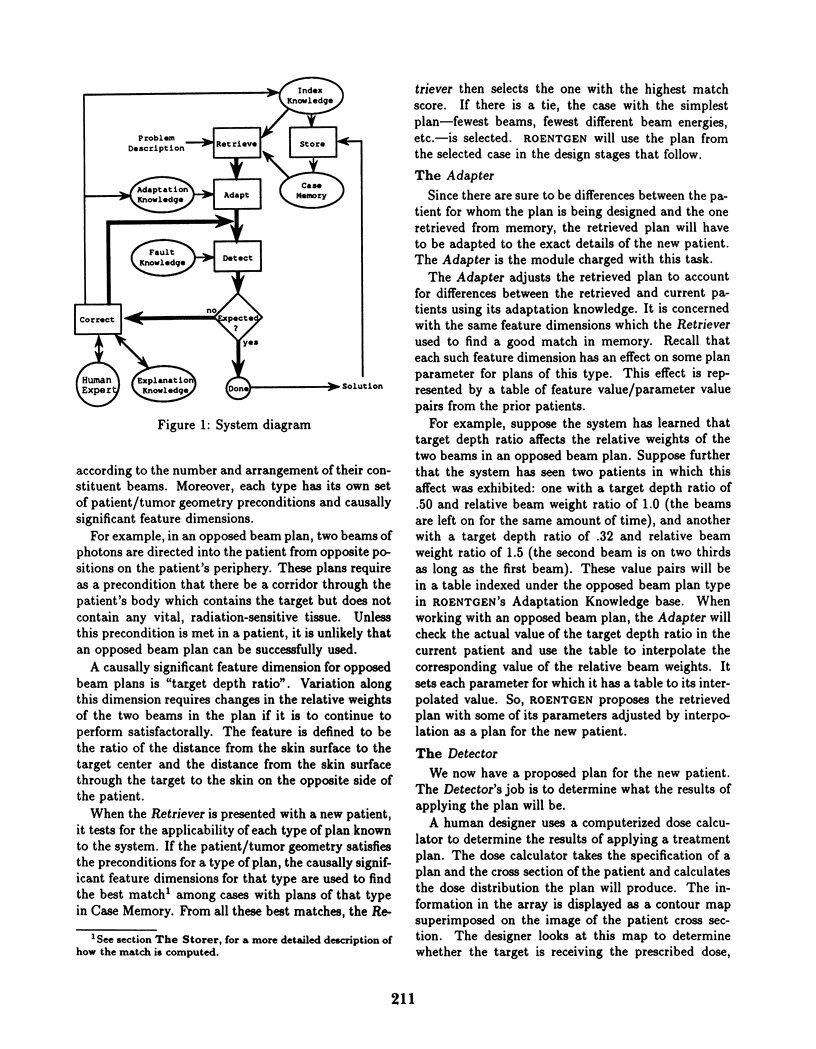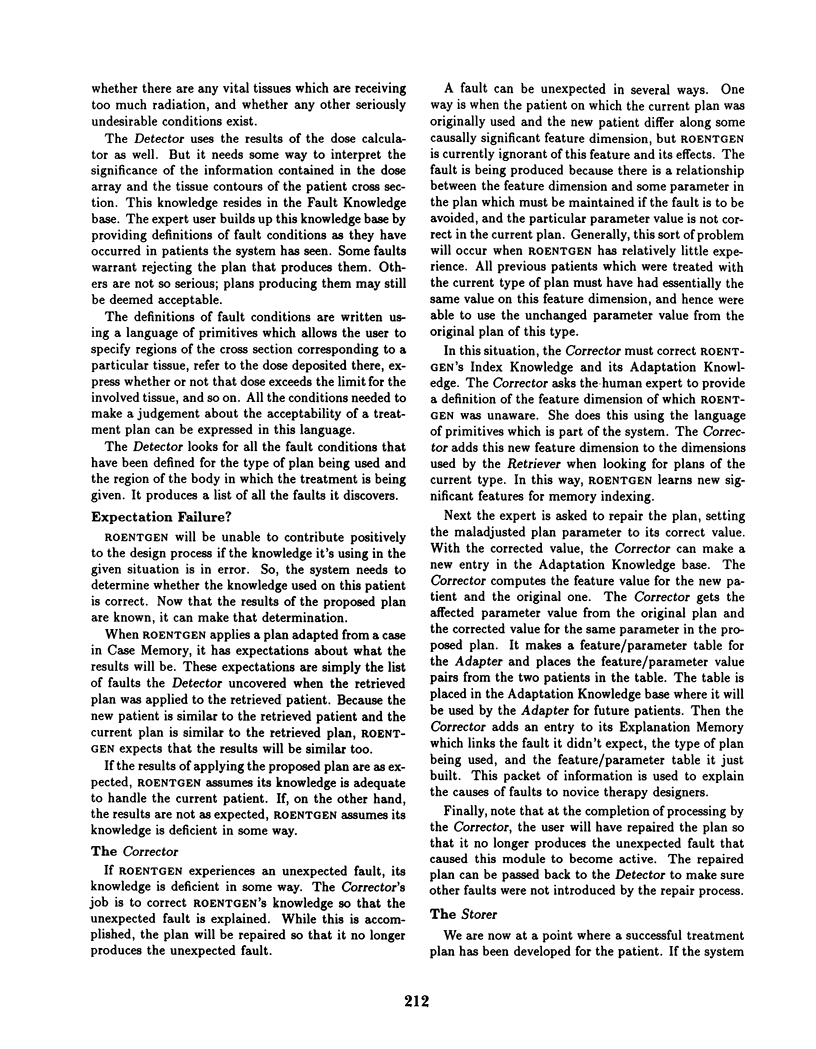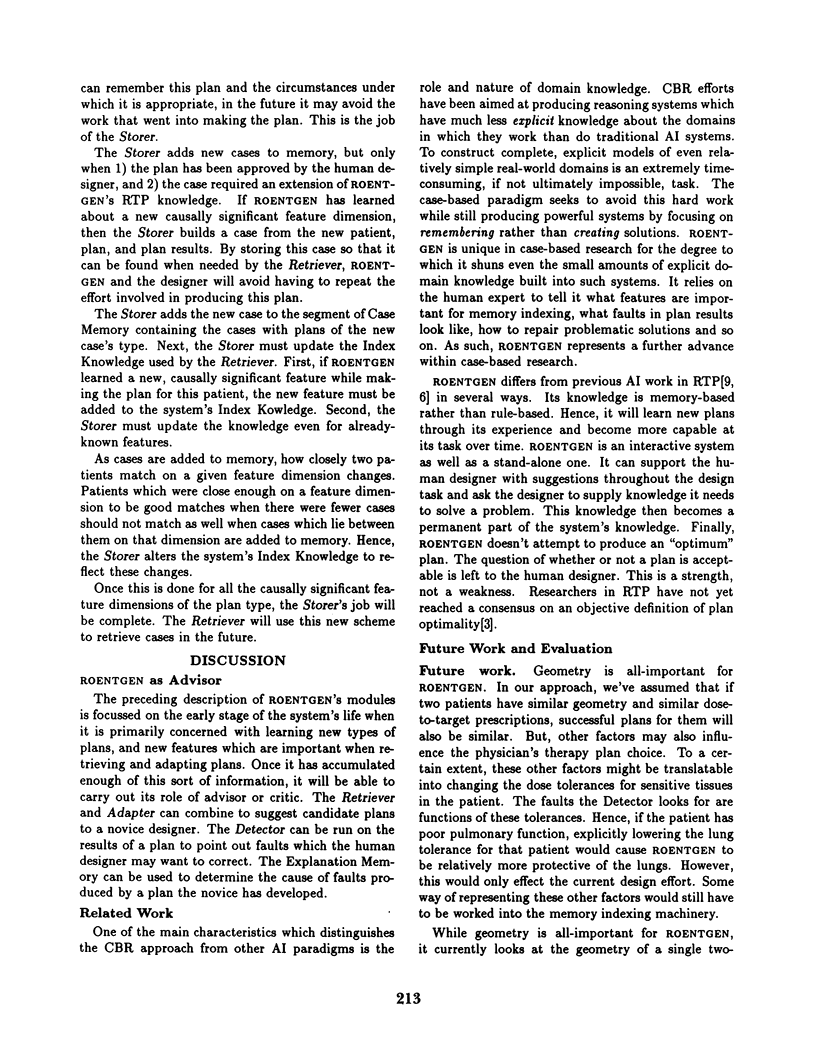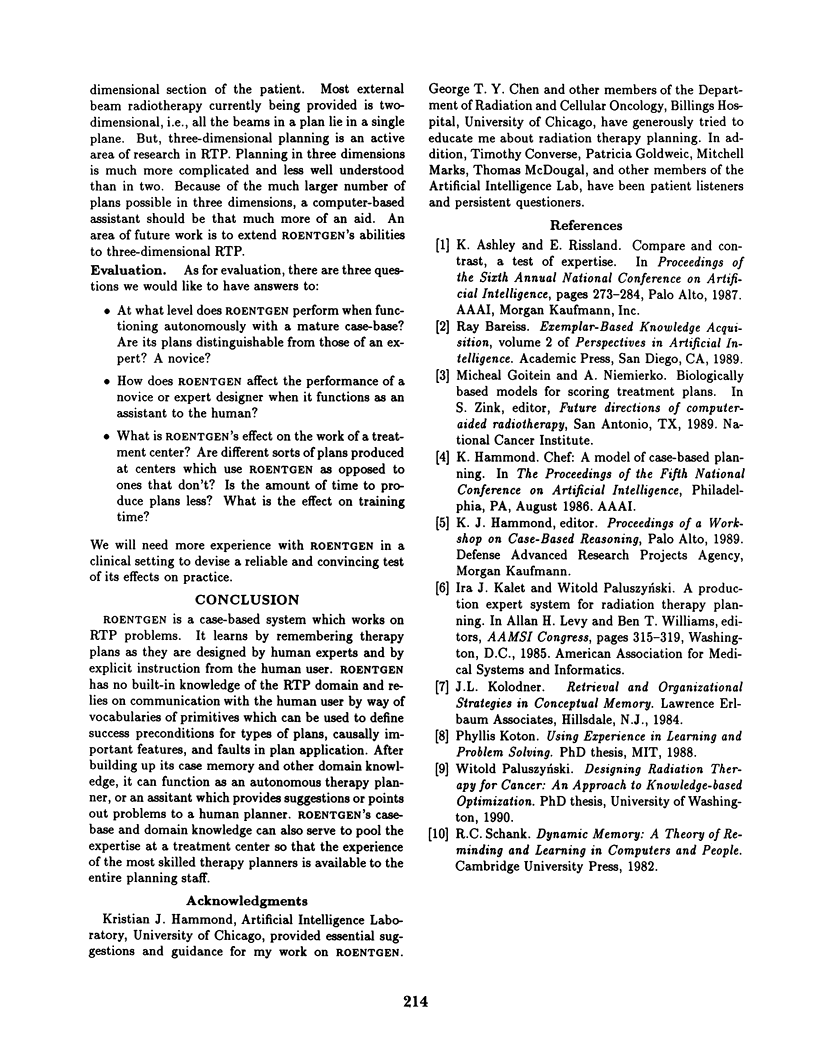Abstract
ROENTGEN is a design assistant for radiation therapy planning which uses case-based reasoning, an artificial intelligence technique. It learns both from specific problem-solving experiences and from direct instruction from the user. The first sort of learning is the normal case-based method of storing problem solutions so that they can be reused. The second sort is necessary because ROENTGEN does not, initially, have an internal model of the physics of its problem domain. This dependence on explicit user instruction brings to the forefront representational questions regarding indexing, failure definition, failure explanation and repair. This paper presents the techniques used by ROENTGEN in its knowledge acquisition and design activities.
Full text
PDF